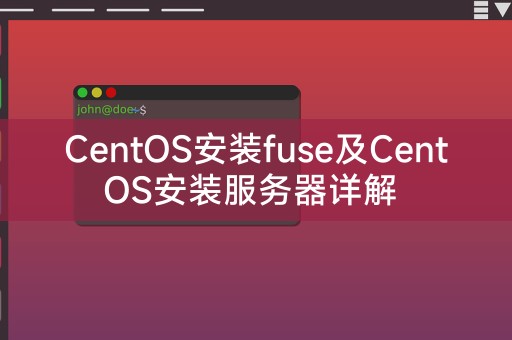
php editor Baicao brings you a detailed analysis of CentOS installation fuse and CentOS installation server. The purpose of installing fuse is to implement the extended function of the file system on the CentOS system, while the purpose of installing the server is to build a stable and reliable server environment. This article will introduce in detail the steps to install fuse on CentOS, as well as the detailed operations of installing the server on CentOS, to help readers easily complete relevant settings and solve problems they may encounter. Whether it is a novice or an experienced user, this article can provide practical guidance and tips. Let’s explore together!

Fuse is a user space file system framework that allows unprivileged users to access and operate the file system through custom file systems , installing fuse on CentOS is very simple, just follow the following steps:
1. Open the terminal and log in as the root user.
2. Use the following command to install the fuse package:
```
yum install fuse
3. Confirm the prompts during the installation process and enter `y`continue.
4. After the installation is complete, use the following command to verify whether fuse is installed successfully:
fuse --version
If the installation is successful, the version information of fuse will be displayed.
Installing servers on CentOS can meet different needs, such as building web servers, database servers, etc. The following are the steps to install common servers on CentOS:
2. Use the following command to install the required server software package, taking building a Web server as an example:
yum install httpd
If you need to build other types of servers, such as database servers, you can Use the corresponding package to install it.
4. After the installation is complete, use the following command to start the server:
systemctl start httpd
If you install other types of servers, such as database servers, the startup command may There is a difference.
5. Use the following command to set the server to start automatically at boot:
systemctl enable httpd
In this way, the server will automatically start when the system starts.
When installing fuse and server, you need to pay attention to some matters to ensure that the installation process proceeds smoothly:
1. During installation When installing packages, make sure your system is connected to the internet so that the required packages and dependencies can be downloaded.
2. When using the yum command to install a software package, be sure to log in with root permissions to avoid insufficient permissions.
3. When installing the server, be sure to know the name of the required server package and make sure you use the correct package for installation.
4. Before starting the server, you can use the following command to check whether the server has been installed correctly:
systemctl status httpd
If the server has been installed and started correctly, the server will be displayed status information.
I hope this article will help you understand how to install fuse and build a server on CentOS. In LINUX, we can use fuse to access various custom file systems and operation, and building a server can meet our different needs. If you have other questions or needs about LINUX, please feel free to consult us at any time.
The above is the detailed content of Detailed explanation of CentOS installation fuse and CentOS installation server. For more information, please follow other related articles on the PHP Chinese website!




